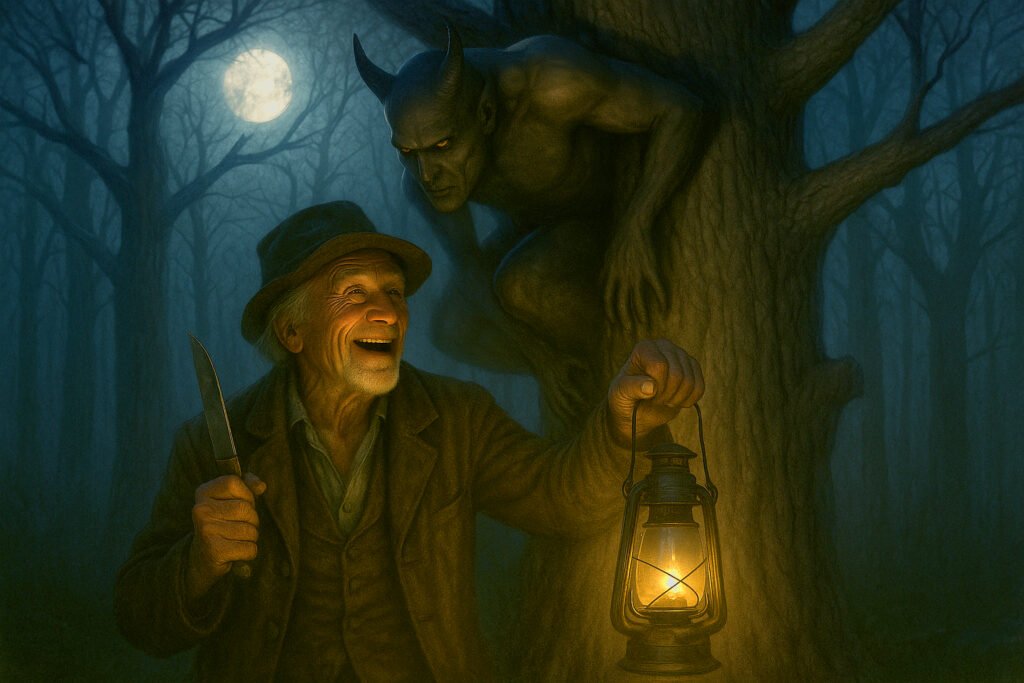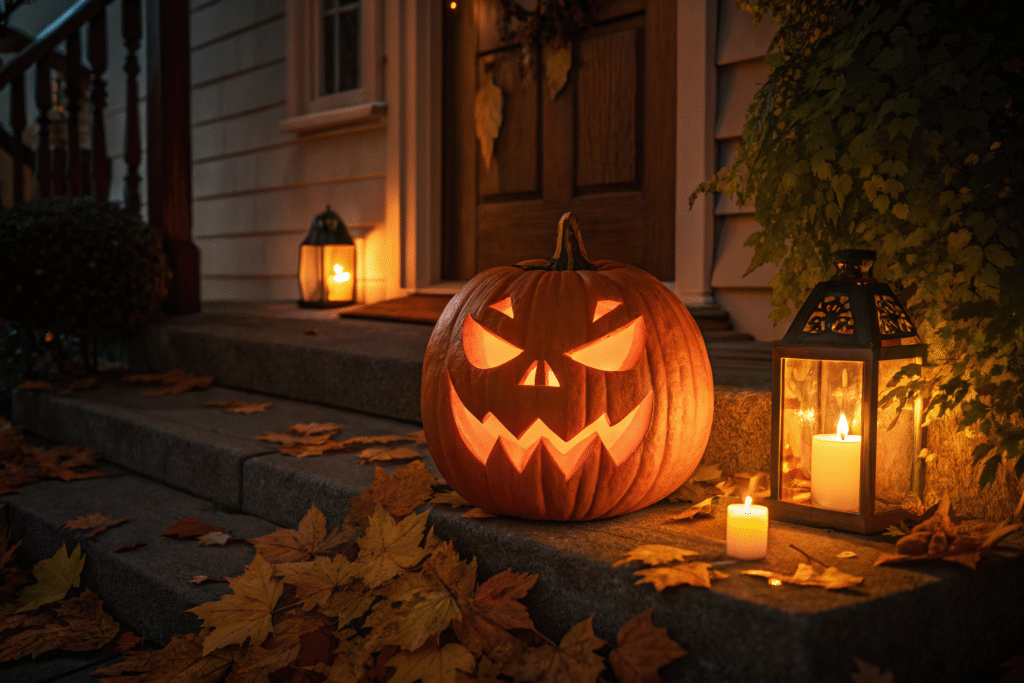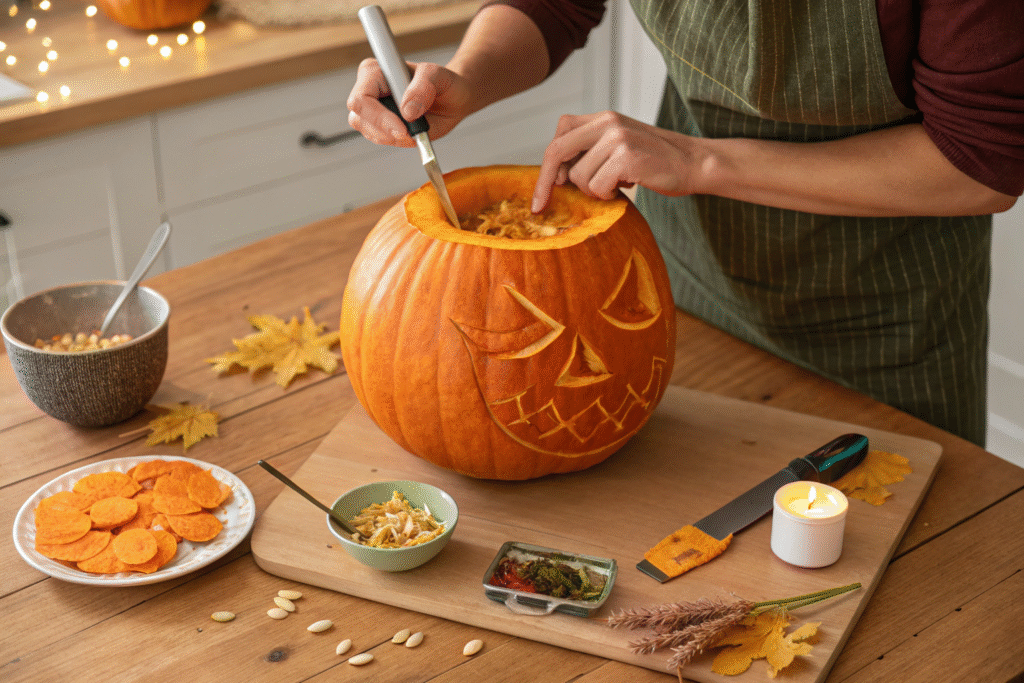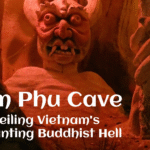Every October, a familiar orange glow appears on porches and windowsills across the world. The grinning, ghoulish, or goofy faces of jack-o’-lanterns have become the undeniable symbol of Halloween. But have you ever stopped to wonder where this tradition comes from? The real jack-o’-lantern history is a fascinating tale that stretches back centuries, long before pumpkins were even part of the story. It’s a journey that begins with ghostly lights in lonely swamps, a clever trickster who fooled the Devil, and ancient rituals designed to keep evil spirits at bay. This story will uncover the true Halloween lantern origin and the deep carved pumpkin meaning that has evolved over time.
Who Was Jack, and Why Does He Have a Lantern?
Before the jack-o’-lantern was a carved vegetable, the name belonged to a mysterious natural phenomenon. The journey into jack-o’-lantern history starts not with a pumpkin, but with a spooky light.
The Ghostly Lights of the Marsh
Imagine walking near a swamp or marsh late at night. In the darkness, you see a flickering light dancing in the distance. You might think it’s a person with a lantern, but as you get closer, it bobs and weaves, trying to lead you off the path and deeper into the bog. en.wikipedia.org
For centuries, people in Britain called these mysterious lights “jack-o’-lanterns.” The name first appeared in the 1600s and literally meant “Jack of the lantern,” or a man carrying a light. These ghostly flames, also known as will-o’-the-wisps, were believed to be mischievous fairies or the lost souls of the dead trying to lure travelers to their doom. This supernatural belief laid the groundwork for one of the most famous stories in all of Halloween lore: the legend of Stingy Jack.
The Legend of Stingy Jack
The most famous piece of stingy jack folklore comes from Ireland. The story tells of a miserable, clever drunkard named Jack who loved to play tricks on everyone, including the Devil himself.
One night, Jack tricked the Devil into climbing an apple tree. Once Satan was in the branches, Jack quickly carved a cross into the trunk, trapping the Devil. Jack refused to let him down until the Devil promised he would never claim Jack’s soul. The Devil, having no choice, agreed.
Years later, when Jack died, his sinful life meant he couldn’t get into Heaven. He went down to the gates of Hell, but the Devil kept his promise and turned him away.
“But where can I go?” Jack asked.
“Back where you came from!” roared the Devil.
Cast out into the eternal darkness between heaven and hell, Jack had no light to guide his way. The Devil, taking a small bit of pity on him, tossed him a single burning coal from the fires of Hell. To carry the ember, Jack hollowed out his favorite food—a turnip—and placed the coal inside.

From that day on, “Jack of the Lantern” was doomed to wander the earth forever, with only his turnip lantern to light his way. This tale of Stingy Jack folklore provided a perfect explanation for the ghostly lights seen in the bogs and gave a name to the practice of carving lanterns to ward off his spirit. The original Halloween lantern origin is thus deeply tied to this myth of a lost, wandering soul.
Ancient Roots: The Spooky Magic of the Samhain Festival
While the legend of Jack gave the lantern its name, the practice of carving vegetables is even older. To understand this part of jack-o’-lantern history, we have to go back over 2,000 years to the ancient Celts and their most important festival: Samhain. history.com
Samhain (pronounced “SAH-win”) was the Celtic New Year, celebrated on the night of October 31. It marked the end of the harvest and the beginning of the long, dark winter. The Celts believed that on this one night, the veil between the world of the living and the world of the spirits became incredibly thin. Ghosts, fairies, and other supernatural beings could walk the earth freely.
These Samhain festival traditions were a mix of celebration and fear. People took precautions to protect themselves from any evil spirits that might be roaming about.
- Bonfires: Communities lit huge bonfires on hilltops to honor the gods and scare away dark forces.
- Costumes: People wore masks and disguises made of animal skins to confuse the spirits or even blend in with them.
- Carved Turnips: Most importantly for our story, people in Ireland and Scotland began carving frightening faces into turnips, potatoes, and other root vegetables. They would place a hot coal or candle inside to make them glow.
These grotesque lanterns were placed on doorsteps and windowsills for one primary reason: to frighten away Stingy Jack and any other malevolent spirits. This protective function is the original carved pumpkin meaning. The scary face served as a magical guardian for the home during the spookiest night of the year, making these ancient rituals a key part of the Halloween lantern origin.

From Turnips to Pumpkins: How the Jack-o’-Lantern Came to America
For centuries, the jack-o’-lantern was a turnip, not a pumpkin. It was a tradition that the Irish and Scottish people held dear, and when they moved to a new land, they brought their customs with them. This is a pivotal chapter in the jack-o’-lantern history.
The Original Halloween Lantern: The Humble Turnip
If you’ve ever tried to carve a turnip, you know it’s not easy. They are small, hard, and tough to hollow out. Yet, for hundreds of years, this was the go-to vegetable for Halloween lanterns in Ireland and Scotland. Each Halloween, families would painstakingly carve their terrifying turnip faces to continue the tradition of warding off evil spirits. The details of this practice confirm the European Halloween lantern origin. The stories of Stingy Jack folklore were told as these gnarled, spooky lanterns were lit, connecting each generation to the myth.
A New World, A New Vegetable
In the 1840s, a terrible potato famine struck Ireland, forcing millions of people to leave their homes and immigrate to America. They brought with them their rich culture and cherished Halloween celebrations, including their Samhain festival traditions and the practice of carving jack-o’-lanterns.
When they arrived in America, they discovered a new vegetable that was perfect for carving: the pumpkin.
Pumpkins were native to North America and were much larger, softer, and easier to hollow out than turnips. It didn’t take long for the immigrants to adopt the pumpkin as their new canvas. By the late 1800s, the carved pumpkin had become a staple of American Halloween celebrations. The tradition had found a new home and a new face, cementing the pumpkin’s place in jack-o’-lantern history.
The Evolving Meaning of the Glowing Grin
The jack-o’-lantern started as a symbol of protection and a reminder of a cursed soul. But as the tradition grew and changed, so did its meaning. The carved pumpkin meaning today is much broader than it was in ancient times. irishtimes.com
A Shield Against Evil
The original purpose of the jack-o’-lantern was to protect. The frightening face was meant to scare away evil spirits, goblins, and even the wandering soul of Stingy Jack. This belief was a core part of the tradition for centuries. Even today, when we place a scary-faced pumpkin on our porch, we are unconsciously tapping into that ancient desire to keep the “boogeymen” away on Halloween night. The protective element is a lasting part of its carved pumpkin meaning.

A Symbol of Halloween Fun
In the 20th century, the jack-o’-lantern’s role began to shift. It evolved from a serious, superstitious object to a symbol of holiday fun and creativity. The scary faces started to be joined by happy, silly, and surprised expressions. Pumpkin carving became a beloved family activity, a chance for people to express their artistic side.
Today, the jack-o’-lantern signals the arrival of the autumn season. Its glowing face embodies the spirit of Halloween—a perfect blend of spooky and playful. This shift highlights how the carved pumpkin meaning has expanded to include joy and community.
Remembering the Lost Souls
Even with all the fun, a hint of the old symbolism remains. The lantern, especially when it’s a single flickering candle in the dark, still reminds us of the connection between life and death that is central to Halloween. Some believe the light represents a soul, connecting back to the stingy jack folklore and the idea of spirits, like Jack’s, caught between worlds. In this way, the tradition helps us remember its deeper, more mysterious roots in Samhain festival traditions.

Enjoy playing the Wordle game, where you can challenge your mind and language skills by trying to guess the hidden word within a limited number of attempts. Each guess provides you with clues about the correctness and position of the letters, adding excitement and suspense to every round.
Busting Myths: Are Jack-o’-Lanterns Linked to Secret Societies?
With its spooky origins, it’s no surprise that some wild theories have popped up about the jack-o’-lantern. Some people have tried to link the tradition to secret societies like the Freemasons or even to ancient demonic rituals.
However, historians and folklorists are clear: there is no evidence to support these claims. The jack-o’-lantern history is rooted in folk customs and community festivals, not in secret cults.
- The Freemasons have their own set of symbols, and the jack-o’-lantern is not one of them.
- The idea that ancient Druids used human heads as lanterns is a modern, sensational myth with no historical proof.
The truth is much simpler and more beautiful. The jack-o’-lantern was created by ordinary people to deal with their fears of the dark and the unknown. It’s a testament to human creativity, not a symbol of some hidden conspiracy.
How to Carve Your Own Piece of History
Want to connect with this ancient tradition? Carving a pumpkin is a fun way to participate in centuries of jack-o’-lantern history. Here’s a simple guide:
- Pick the Perfect Pumpkin: Find a pumpkin that is firm, has a flat bottom, and feels sturdy.
- Cut the Lid: Use a strong, serrated knife to cut a circle around the stem. Angle the knife inward so the lid won’t fall inside.
- Scoop it Out: Use a large spoon or ice cream scoop to remove all the seeds and stringy pulp. Scrape the inside wall where you plan to carve to make it a bit thinner.
- Create Your Design: Draw your face on the pumpkin with a marker. You can go for a classic scary look or try something funny or creative!
- Carve Carefully: Use a small, sharp knife to cut along the lines of your design. Take your time and always cut away from yourself.
- Light it Up: Place a small candle, tea light, or a battery-operated LED light inside. Put the lid back on, and your jack-o’-lantern is ready to glow!

Conclusion: A Light That Never Goes Out
The journey of the jack-o’-lantern is a remarkable one. It started as a flickering, ghostly light in a lonely marsh, became the subject of the famous Stingy Jack folklore, and was brought to life through the ancient Samhain festival traditions of carving turnips. After crossing the ocean, it transformed into the beloved pumpkin we know today.
From a symbol of fear and protection to one of community and creativity, the carved pumpkin meaning has grown richer with every generation. Yet, it never completely lost its connection to the past. Every time we light a jack-o’-lantern, we are taking part in a tradition that connects us to our ancestors and their beliefs about the spirit world. It’s a simple act that keeps a powerful story alive, ensuring that Jack’s little light continues to flicker through the darkness, year after year.

Discover the world’s most iconic public squares, where history, culture, and vibrant life come together. Explore breathtaking architecture and lively atmospheres in our top 12 picks. Dive into the heart of global cities visit now and experience these unforgettable urban gems!














